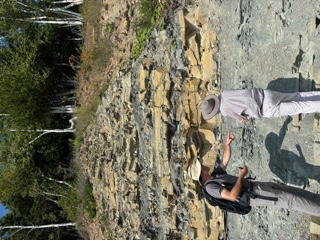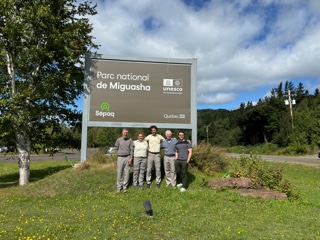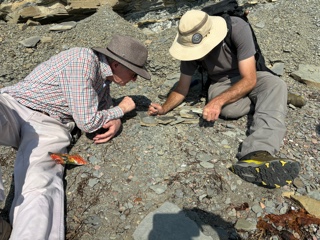
Unearthing the Past: Uncovering the Mysteries of Miguasha's Fossil History
Oct 7, 2024
2 min read
0
4
0
A Glimpse into the Past
Miguasha, a UNESCO World Heritage Site in Quebec, Canada, offers a glimpse into the Devonian Period, often referred to as the "Age of Fishes." This period, approximately 360 million years ago, witnessed a remarkable diversity of marine life, including an array of ancient fish species, making it a pivotal era in Earth's evolutionary history.
The Fossil Cliffs of Miguasha
One of the most iconic features of Miguasha is its fossil-rich cliffs, which have yielded an astonishing collection of fossils over the years. These cliffs preserve a snapshot of prehistoric life, offering researchers and visitors alike a unique opportunity to witness the evolution of marine organisms.
Unraveling Evolution
Through meticulous excavation and research, scientists have uncovered fossils of early tetrapods at Miguasha, shedding light on the transition of fish to land-dwelling creatures. This evolutionary leap marks a significant milestone in the history of life on Earth.
Exploring Miguasha Today
Canowindra local, David Mc Grath and his family had the pleasure of visiting Miguasha recently. He has shared his experiences with us:
“This site is of similar Late Devonian age to the Canowindra site, sharing some of the same fish and plants.
We were warmly received by professional staff members France, Olivier and Jason, who guided us around the Miguasha cliff site and showed us the fossil collection in the museum.
The fossil preparation lab was world class, with state-of-the-art technology.
The museum integrates through three ideas:
Conservation
Education
Science
Miguasha has deservedly received recognition as a UNESCO World Heritage Asset. Canadians are rightfully proud of this status. Both Canowindra and Miguasha are regarded as “Lagerstatten” sites, with exceptional quality fossils, important in our understanding of biological and geological history. Their discovery of a tetrapodomorph or aquatic tetrapod in estuary type sediments, increases the probability of such a find at Canowindra with mostly river sediments."
RED HILL PENNSYLVANIA, reviewed in a previous blog, has similar age quality fossils. They also have an advanced tetrapod or early amphibian.
"We look forward to continuing affiliation with Miguasha and Red Hill, sharing research and more general ideas. Further exploration on our own Canowindra site should begin 2024/25 "
*Note: All images used in this blog post are courtesy of David and Aleysha McGrath.
.png)








